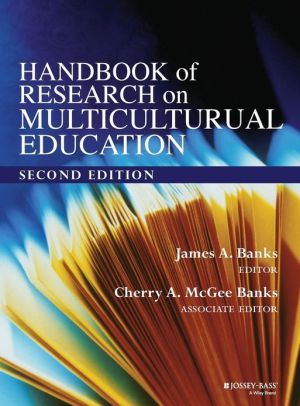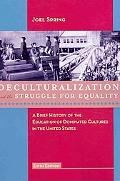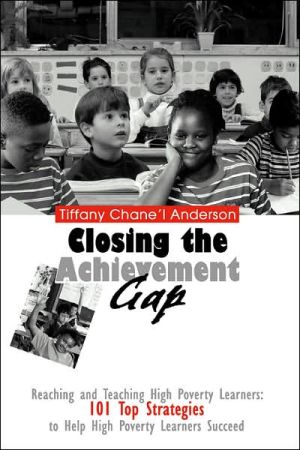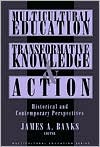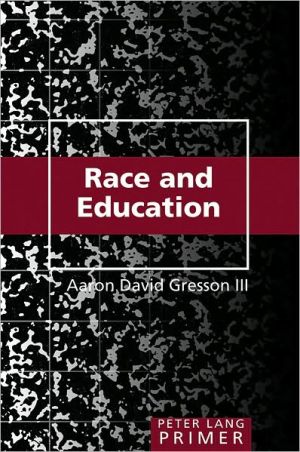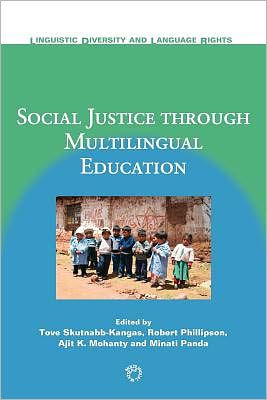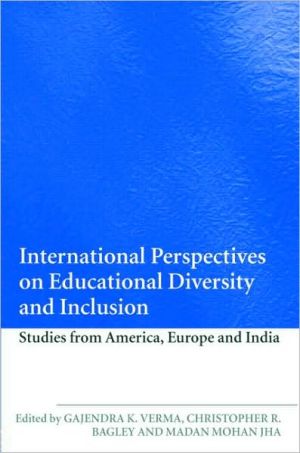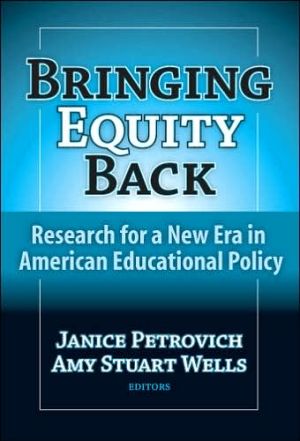Handbook of Research on Multicultural Education
The First Edition of the Handbook of Research on Multicultural Education was the recipient of the 1997 Multicultural Book Award from the National Association of Multicultural Education (NAME).\ "This comprehensive and enlightening volume embraces the major research and scholarship in multicultural educationtracing historical themes that shape our contemporary views, crossing disciplinary boundaries, joining theory and practice, and provoking a new public discourse about navigating the twin...
Search in google:
In this second edition, twenty-nine classic chapters have been revised and updated and twenty new chapters have been added to reflect how the field has evolved since the first edition of the Handbook was published in 1995. This landmark volume describes and analyzes changes such as increased immigration to the United States and new developments in theory and research related to race, culture, ethnicity, and language. It addresses new issues such as findings on the increase in the number of interracial children and the characteristics of children of immigrant families. The educational implications of new research and trends are also discussed. The Handbook's forty-nine chapters are divided into twelve parts that clarify the meaning and boundaries of multicultural education. Topics covered include trends and developments, ethnic groups in historical and social science research, language issues, academic achievement, higher education, and international perspectives on multicultural education. The volume also offers comprehensive and balanced analyses of key controversies and debates in the field. Booknews This handbook covers major research and practice in the field of multicultural education, which aims to create equal educational opportunities for students from diverse racial, ethnic, social class, and cultural groups. Banks (U. of Washington, Seattle) and McGee Banks (U. of Washington, Bothell) assemble contributions from leading scholars to discuss the history, philosophy, practice, and future of the field. The 47 chapters analyze key controversies and debates with respect to the research and education of specific ethnic groups, the role of gender and race in educational policy and practice, second language teaching and learning, academic achievement and access to knowledge, the dynamics of intergroup relations, and diversity in higher education. Annotation c. Book News, Inc., Portland, OR (booknews.com)
Handbook of Research on Multicultural Education\ \ By James A. Banks Cherry A. McGee Banks \ John Wiley & Sons\ ISBN: 0-7879-5915-4 \ \ \ Chapter One\ NEW DIRECTIONS IN MULTICULTURAL EDUCATION \ Complexities, Boundaries, and Critical Race Theory\ Gloria Ladson-Billings University of Wisconsin, Madison\ The Sunday, May 20, 2001, headline on the Chicago Tribune read, "A Multicultural State for Sears." The subheading pointed out that Sears, one of the largest retailers in the United States, was targeting Black and Latino consumers. (In this chapter, the term Black designates all individuals of African descent. In cases where the reference is solely to Blacks who also have a U.S. heritage, the term is African American.) The ease with which a major newspaper used the term multicultural tells us something about how power and domination appropriate even the most marginal voices. Multicultural has made it to Main Street.\ This chapter examines the ways current ideas about the term multicultural must give way to new expressions of human and social diversity. It argues for reconceptualized views of difference that often are forced to operate in old social schemes. Placed in a linear chronology, this chapter would necessarily cover a large volume, not a chapter. Thus the liberty taken with this discussion is to appropriate a metaphor-jazz-to scaffold the changing, often conflicting, developments and iterations of this field we call multiculturaleducation.\ Carl Engel's discussion of jazz in 1922 pointed out that "good jazz is a composite, the happy union of seemingly incompatible elements.... It is the upshot of a transformation ... and culminates in something unique, unmatched in any other part of the world" (p. 6). Engel further asserts that "jazz is rag-time, plus 'Blues,' plus orchestral polyphony; it is the combination ... of melody, rhythm, harmony, and counterpoint" (p. 8). Finally,\ Jazz is abandon, is whimsicality in music. A good jazz band should never play, and actually never does play, the same piece twice in the same manner. Each player must be a clever musician, an originator as well as an interpreter, a wheel that turns hither and thither on its own axis without disturbing the clockwork." (p. 9) (A number of these jazz references come from the Atlantic Monthly's jazz archives, which can be found on the Internet at theatlantic.com/unbound/jazz.)\ Indeed, what we now call multicultural education also is a composite. It is no longer solely race, or class, or gender. Rather, it is the infinite permutations that come about as a result of the dazzling array of combinations human beings recruit to organize and fulfill themselves. Like jazz, no human being is ever the same in every context. The variety of "selves" we perform have made multicultural education a richer, more complex, and more difficult enterprise to organize and implement than previously envisioned. In 1955, Arnold Sundgaard pointed out:\ A song of itself is not jazz, no matter what its origin. Jazz is what the jazzmen [sic] searching together bring to it, take from it, find within it.... Much is left free for improvisation, and no precise method of notation has been developed to indicate its rhythmic and emotional complexities.... The song and its arrangement become ... a means to an end. The music used ... is somewhat incidental to the inspired uses to which it is put. For this reason jazz ... thrives on endless exploration and ceaseless discovery. (pp. 1-2)\ Again, like jazz, multicultural education is less a thing than a process. It is organic and dynamic, and although it has a history rooted in our traditional notions of curriculum and schooling its aims and purposes transcend all conventional perceptions of education. Early attempts at multicultural education were rooted in what Hollinger (1995) called the ethnoracial pentagon, that is, African Americans, Asian Americans, Latinas/os, Native Americans, and European Americans. These static categories held some political sway but began to lose their social and symbolic meanings because of the changes in the everyday lives of most people. Racial and ethnic inequity and discrimination had played significant roles in contouring the U.S. landscape. But demographic shifts, a growing understanding of the multiple identities that people inhabit and embrace, and an awareness of other forms of oppression made the ethnoracial distinctions a limited way to talk about multiculturalism and multicultural education.\ Perhaps the limitation in this thinking about multiculturalism stems from limited thinking about the term culture. Most common definitions of culture describe it either as "an aesthetic phenomenon" (Coffey, 2000, p. 38) or a particular way of life that includes knowledge, values, artifacts, beliefs, and other aspects of human endeavor peculiar to any group or groups of people (Williams, 1976). It is this latter definition that has come to be associated with multiculturalism. However, Coffey (2000) cites Tony Bennett in describing new thinking about culture:\ [It] is more cogently conceived ... when thought of as a historically specific set of institutionally embedded relations of government in which the forms of thought and conduct of extended populations are targeted for transformation-in part via the extension through the social body of the forms, techniques, and regimens of aesthetic and intellectual culture. (Bennett, 1992, p. 26)\ Bennett's (1992) work is informed by Foucault's (1991) writing on governmentality and argues that culture is created through the processes of social management, and that it is both the object and the instrument of government. This definition does not negate the materiality of culture (that is, the objects and practices of culture) but expands conventional notions of culture to include the way both specialized and everyday practices are marked as culture. The very human endeavors that may be seen as normal or commonsensical are culturally bounded. Multiculturalism cannot be seen merely as a study of the other, but rather as multiple studies of culture and cultural practices in the lives of all humans.\ Another theme of this chapter is that the notion of America, like jazz, does not lend itself easily to definition and prescription. Ward and Burns (2000) link jazz to America:\ It is America's music-born out of a million American negotiations: between having and not having; between happy and sad, country and city; between black and white and men and women; between the Old Africa and the Old Europe-which could only have happened in an entirely New World.\ It is an improvisational art, making itself up as it goes along-just like the country that gave it birth.\ It rewards individual expression but demands selfless collaboration.\ It is forever changing but nearly always rooted in the blues.\ It has a rich tradition and its own rules, but it is brand-new every night.\ It is about just making a living and taking terrible risks, losing everything and finding love, making things simple and dressing to the nines.\ It has enjoyed huge popularity and survived hard times, but it has always reflected Americans-all Americans-at their best (p. xxi)\ I argue that this multilayered, eclectic description of America is similarly evident in new notions of multicultural education. The early beginnings of multicultural education (see J. A. Banks, Chapter 1, this volume) are reminiscent of the early beginnings of jazz. Scholars as far back as George Washington Williams in the 1880s and W.E.B. DuBois in the first decades of the 20th century began to articulate a new vision of history that positioned African Americans as fully human cultural agents. The dissonance caused by this "new" vision of history parallels the dissonance from early jazz stirrings. The editor of Etude magazine (cited in Ward & Burns, 2000) asserted that the music was "syncopation gone mad.... Whether it is simply a passing phase of our decadent art culture or an infectious disease which has come to stay ... time alone can tell" (pp. 14-15).\ However, by the 1960s and 1970s social movements concerning the rights of African Americans, Latinas/os, Native Americans, Asian Americans, women, and the poor were sweeping across America. By appropriating the language of civil rights and the strategy of legal remedies, various groups were able to make use of existing laws and push for new ones that recognized their basic humanity. The parallel moment in jazz was roughly between 1917 and 1924, or the emergence of the jazz age. It was during this era of World War I and the Roaring Twenties that jazz became clearly established in the United States. In 1926, R.W.S. Mendl stated that "jazz is the product of a restless age: an age in which the fever of war is only now beginning to abate its fury: when men and women, after their efforts in the great struggle, are still too much disturbed to be content with a tranquil existence" (quoted in Ward & Burns, 2000, p. 102).\ In the Ward and Burns volume (2000), a quotation from Duke Ellington captures another central point of this discussion, that of freedom and liberation:\ Jazz is a good barometer of freedom.... In its beginnings, the United States of America spawned certain ideals of freedom and independence through which eventually jazz was evolved, and the music is so free that many people say it is the only unhampered, unhindered expression of complete freedom yet produced in this country. (p. vii)\ Multicultural education, like America itself, is about the expression of freedom, but notions of freedom and liberation almost always involve contestation. The work of the social movements was taken up by theorists and practitioners to create new curriculum and instructional practices to reflect changes in the sociopolitical landscape. Work by James A. Banks, Gwendolyn Baker, Carl Grant, and Geneva Gay built on the ethnic studies work of scholars such as Carlos Cortés, Jack Forbes, Asa Hilliard, Barbara Sizemore, and others to create rubrics for curriculum designers and teachers who took on the task of aligning school curricula with emerging scholarly evidence about the histories, cultures, lives, and experiences of various peoples. More important, this work challenged old perceptions of America as a "White" country.\ Today it is almost impossible to walk into an elementary school in the United States and not find representation of "multicultural America." These representations take the form of characters in reading books, bulletin board displays, assembly programs, and even school supplies (Crayola crayons offers what it calls a "multicultural" crayon set purportedly with hues that represent various skin colors). But it is just this commonality (as expressed earlier in the Sears store example) that has forced scholars and activists to begin pushing the boundaries of multicultural education and argue against the ways dominant ideologies are able to appropriate the multicultural discourse (McCarthy, 1988; Wynter, 1992). At the secondary school level, there are an array of courses (typically electives) and clubs that acknowledge the cultural contributions of various groups formerly ignored by the school curriculum. However, these efforts typically represent what King (2001) calls "marginalizing knowledge," which "is a form of curriculum transformation that can include selected 'multicultural' curriculum content that simultaneously distorts both the historical and social reality that people actually experienced.... This form of marginalizing inclusion is justified in the (indivisible) interest of 'our common culture'" (p. 274).\ McLaren (1994, 2000) introduces the notions of "critical multiculturalism" and/or "revolutionary multiculturalism" to interrupt the diversity discourse that emerged to supplant and subvert the original intentions of theorists who set out to create a pedagogy of liberation and social justice. King (2001) calls for "deciphering culture-centered knowledge" that leads to "changed consciousness and cognitive autonomy [that] can be a foundation for curriculum transformation" (p. 276). This "new multiculturalism," like the new jazz ushered in by alto saxophonist Ornette Coleman, represents a "permanent revolution" (Davis, 1985, p. 1). In his discussion of Coleman's work, Davis said:\ What must have bothered musicians ... more than the unmistakable southern dialect of Coleman's music was its apparent formlessness, its flouting of rules that most jazz modernists had invested a great deal of time and effort in mastering. In the wake of bebop, jazz had become a music of enormous harmonic complexity. By the late 1950s it seemed to be in danger of becoming a playground for virtuosos, as the liberating practice of running the chords became routine. If some great players sounded at times as though they lacked commitment and were simply going through the motions, it was because the motions were what they had become most committed to. (p. 4)\ Critical multiculturalism that relies on a deciphering knowledge seeks to push past going through the motions of multiculturalism. The remainder of this chapter discusses a rubric for thinking about multicultural education, the extant tensions within the field, a rearticulation of race, and a look at current trends in multicultural education.\ A RUBRIC FOR THINKING ABOUT MULTICULTURAL EDUCATION\ The discomfort is also there, of course, in the music's structure. Rather than following standard chord progressions and traditional solo structures, large portions of the ensemble's repertoire are devoted to impromptu explorations of a semiotic freedom (Heble, 2000).\ Banks (Chapter 1, this volume) puts forth five dimensions of multicultural education that help us understand its comprehensive and multifaceted nature: content integration, knowledge construction, prejudice reduction, equity pedagogy, and an empowering school culture (see Banks for a full explanation of these elements). This chapter focuses more directly on the knowledge construction aspect of his dimensions because new notions of knowledge, what is knowable-or the epistemological basis of a discipline or area of study-determines its theoretical, conceptual, methodological, and pedagogical trajectory. Gordon (1997) reminds us that "mainstream social science knowledge is grounded in the standards for knowledge production that have developed in the physical sciences (Keto, 1989), in which the main purpose of research is seen as seeking universal 'truths,' generalizations one can apply to all-'totalizing schemas'" (p. 47).\ Gordon further asserts that epistemological paradigms emerging from the experiences of people of color and women offer a challenge to these mainstream perspectives.\ \ Continues...\ \ \ \ Excerpted from Handbook of Research on Multicultural Education by James A. Banks Cherry A. McGee Banks Excerpted by permission.\ All rights reserved. No part of this excerpt may be reproduced or reprinted without permission in writing from the publisher.\ Excerpts are provided by Dial-A-Book Inc. solely for the personal use of visitors to this web site. \ \
IntroductionContributorsReviewers1Multicultural Education: Historical Development, Dimensions, and Practice32Curriculum Theory and Multicultural Education303New Directions in Multicultural Education: Complexities, Boundaries, and Critical Race Theory504Access and Achievement in Mathematics and Science: Inequalities That Endure and Change695Assessment, Standards, and Equity916Multiracial Families and Children: Implications for Educational Research and Practice1107Quantitative Methods in Multicultural Education Research1278Ethnography in Communities: Learning the Everyday Life of America's Subordinated Youth1469Ethnographic Studies of Multicultural Education in U.S. Classrooms and Schools16310A Decade of Research on the Changing Terrain of Multicultural Education Research18411Knowledge Construction and Popular Culture: The Media as Multicultural Educator21112Race, Knowledge Construction, and Education in the United States: Lessons from History22813Critical Pedagogy, Critical Race Theory, and Antiracist Education: Implications for Multicultural Education24014Ethnic Mexicans in Historical and Social Science Scholarship26115Deconstructing and Contextualizing the Historical and Social Science Literature on Puerto Ricans28816American Indian Studies31517Social Science Research on Asian Americans33218Culture-Centered Knowledge: Black Studies, Curriculum Transformation, and Social Action34919Immigrants and Education in the United States38120Children and Youth in Immigrant Families: Demographic, Social, and Educational Issues40421The Academic Engagement and Achievement of Latino Youth42022Educating Native Americans44123Historical and Sociocultural Influences on African American Education46224Educating Mexican American Students: Past Treatment and Recent Developments in Theory, Research, Policy, and Practice49125Puerto Rican Students in U.S. Schools: A Troubled Past and the Search for a Hopeful Future51526Asian Pacific American Students: Challenging a Biased Educational System54227Language Issues in Multicultural Contexts56728Trends in Two-Way Immersion Research58929What Happens to a Dream Deferred? The Continuing Quest for Equal Educational Opportunity60730Research on Families, Schools, and Communities: A Multicultural Perspective63131Social Class and Schooling65632A Threat in the Air: How Stereotypes Shape Intellectual Identity and Performance68233Engaging Life: A Funds-of-Knowledge Approach to Multicultural Education69934Culturally Diverse Students in Special Education: Legacies and Prospects71635Equity in Heterogeneous Classrooms73636Intercultural and Intergroup Education, 1929-1959: Linking Schools and Communities75337Intergroup Contact: Theory, Research, and New Perspectives77038Intergroup Relations in Multicultural Education Programs78239Fostering Positive Intergroup Relations In Schools79940Multicultural Counseling and Therapy (MCT) Theory81341The Effects of School Desegregation82842Research on Racial Issues in American Higher Education84743Ethnic Studies in U.S. Higher Education: History, Development, and Goals86944Women's Studies and Curriculum Transformation in the United States88245Multiculturalism and Core Curricula90646Multicultural Teacher Education: Research, Practice, and Policy93147Multicultural Education in Australia: Historical Development and Current Status97948Multicultural Education in the United Kingdom: Historical Development and Current Status99749Challenges for Post-Apartheid South Africa: Decolonizing Education1027Name Index1041Subject Index1068
\ BooknewsThis handbook covers major research and practice in the field of multicultural education, which aims to create equal educational opportunities for students from diverse racial, ethnic, social class, and cultural groups. Banks (U. of Washington, Seattle) and McGee Banks (U. of Washington, Bothell) assemble contributions from leading scholars to discuss the history, philosophy, practice, and future of the field. The 47 chapters analyze key controversies and debates with respect to the research and education of specific ethnic groups, the role of gender and race in educational policy and practice, second language teaching and learning, academic achievement and access to knowledge, the dynamics of intergroup relations, and diversity in higher education. Annotation c. Book News, Inc., Portland, OR (booknews.com)\ \
